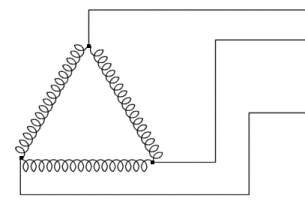 |
|
|
Site Navigation
Projects & Information
»General Information»Wind turbine Projects »The F&P Smartdrive »Electronic projects »Microcontroller projects »Miscellaneous Kits & Parts
»Basicly Natural Pty Ltd»PVC & Aluminium blades »Scale model farm windmills »Price Watch Discussion Forums
Handy Links
»Wind»Solar »Electric Vehicles »Electronics »Micro Controllers »General Interrest About TheBackShed Getting Started Privacy Policy |
Electrical Now that your windmill is up in the air, you need to work out what to do with the output power. But first a word about the windmills "Power Band". A windmill behaves a lot like a conventional car engine, at low RPM a engine makes little power and is easily stalled, and at high RPM there is the risk of premature wear or breakage. You want to keep your windmill in the mid RPM range where its making most power reliably. As a experiment, with the windmill stalled ( pulled out of the wind ) connect 2 100watt spotlamps in series across the output leads. Allow the windmill to find the wind, and it will turn slowly ( assuming its a moderate breeze, a strong wind will overcome the load from low RPM ), and the spotlamps will not light or only glow dimly. Disconnect the spotlamps. The windmill will speed up quickly to 200-500 rpm. Connect the spotlamps. They will glow at full brightness with little drop in windmill RPM. The windmill is now in its power band and will continue until the wind speed drops off. If you connect your windmill across a 12 volt battery, the windmill will see no load until the output voltage increases over 12 volts. Therefore the windmill will be able to speed up to its power band before there is a load. This power band is where you need to operate the windmill for best results. Regulating windmill power is a little more tricky than solar cells. Solar cells can be open circuited when the storage battery has reached full charge. This is not a good idea for windmills. Say your windmill is pumping out 20 amps into a 12 volt battery in a strong wind, and spinning at about 400 RPM. If your regulator circuit suddenly open circuits the windmill, it has no load and will speed up to, say, 800 RPM. At this high speed the windmill output voltage could reach over 50 volts. If you regulator suddenly reconnects the battery the windmill output current will be excessive and can cause damage. Remember the windmill is acting like a big flywheel and will take some time to slow down to a safe speed. Excessive speed can also increase the wear and tear on the windmill blades, at 800 RPM a 2 meter diameter propeller will have a tip speed of 300kmh! Any dust or rain droplets ( or unfortunate insects ) hitting the blade at this speed will quickly pit and wear down the blade tips. So a suitable regulator will need to switch the windmill output from the battery bank to a dummy load, therefore keeping the windmill RPM down to a reasonable speed. I use 4 100 watt 12 volt spotlamps, wired in parallel, but you could use several electric heater elements. Maybe mount the heater elements into an old hot water urn as a free water heater! The regulator used for my batter charger uses a PICAXE chip to switch MOSFETS. Click here for more info. Oatley Electronics ( www.oatleyelectronics.com ) also sell a windmill regulator kit for approx $22 plus delivery. A better option would be to use a commercial regulator, such as the Plasmatronic PL regulator, configured as a shunt regulator. The Plasmatronic regulators are easily programmable and robust, for more information or sales you can contact Thomas Pluess from Sun Power Mackay via email at sunpowermackay@bigpond.com. For more infomation about Plasmatronic Regulators check out the three PDF files below.
Further Suggestions. Star to Delta switch. If you live in a high wind area you could rewire the stator as a delta configuration.
Delta configuration will provide more output current at high RPM, but output is much less at low RPM compared to a star configuration. You could design a circuit that switches the windings from Star to Delta as the RPM increases. 3 Phase Transformer The problem with the low voltage from the windmill is that you need a heavy core ( 5mm dia or better ) power lead if your battery bank is a fair way from the windmill. Or you could try leaving the stator as standard ( output 0 - 300 volts AC ) running a conventional 240V 10 amp extension lead from the windmill to your battery bank, and then use 3 step down transformers ( 240-24 volt, 10 amp output ) wired across each phase. Each transformer will need to be fed into its own full wave rectifier, the outputs coupled together to provide your low voltage high current output. The problem with using transmormers is they are designed to operate at a frequency of 50Hz, but the windmill output frequency would be a lot higher than this, so the transformers will not run efficiently and overheat. |
||
